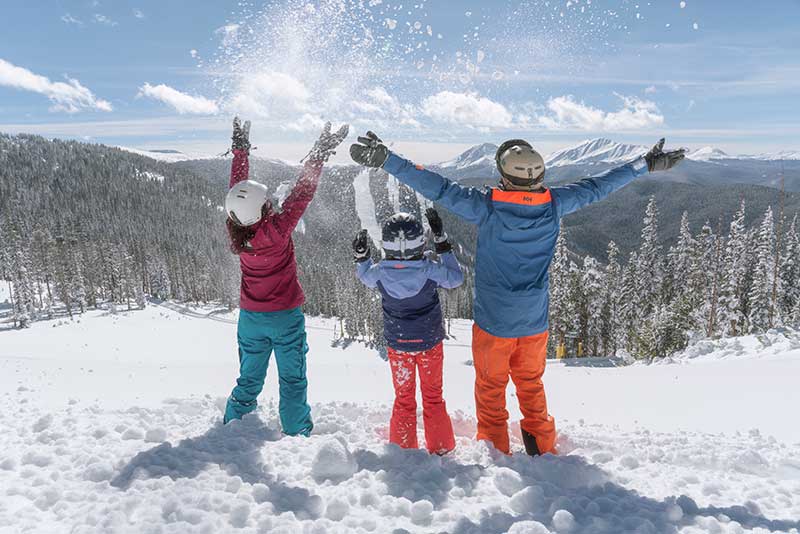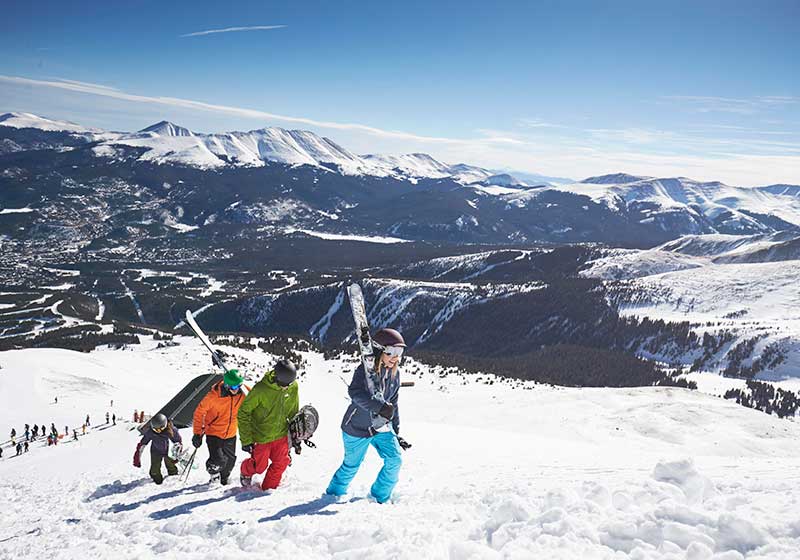Pre-Trip Wellness Tips
Welcome to the high country of Summit County. The mountains of Colorado are among the most beautiful parts of the United States and we hope you enjoy every minute of your visit! However, some of the very features which make this area so attractive may also cause you problems, unless you are able to recognize the symptoms and know how to prevent them.
High Altitude Health Tips
Altitude Illness
 Above 8,000 feet altitude illness affects 20-30% of visitors. The Town of Breckenridge is at an elevation of 9,600 feet. The elevation of BOEC’s Scott Griffith Lodge is at 9,963 feet! If you are sleeping at “The Griffith,” please review the following information so that you can prepare yourself for a successful trip.
Above 8,000 feet altitude illness affects 20-30% of visitors. The Town of Breckenridge is at an elevation of 9,600 feet. The elevation of BOEC’s Scott Griffith Lodge is at 9,963 feet! If you are sleeping at “The Griffith,” please review the following information so that you can prepare yourself for a successful trip.
The extent to which you are affected depends on how quickly you ascend, what elevation you attain and how hard you exercise, what you eat and drink, and what health problems you may have (smoking, emphysema, asthma, anemia, high blood pressure, diabetes or other medical conditions). When planning a trip to above 8,000 feet consult your doctor if you have any questions.
Do not push the limits of your physical capabilities. If you feel worse, get medical attention. Minor altitude illness symptoms can occasionally become life threatening.
Before You Come to Altitude above 8,000 feet
- If possible, spending a night or two at modest altitude 5,000 – 6,000 feet may decease symptoms. Denver is a great option for this.
- Eating foods which are high in carbohydrates and drinking more water than usual and using less salt.
- If you are prone to altitude sickness, consult your physician about any prescription drug options.
Avoid Altitude Illness
- Increase fluid intake & stay hydrated!!! Drink more water or fluid than normal.
- Decrease salt intake.
- Decrease sugar intake.
- Moderate your physical activity. Ease into it, don’t start off too hard!
- Eat high carbohydrate, low fat meals.
- Reduce alcohol and caffeine intake.
- Listen to your body. Feeling worse? – Seek help.
Symptoms – Mild Altitude Illness
- Breathing is faster and or deeper.
- Feeling short of breath.
- Increased heart rate.
- May develop nausea, headaches, unusual tiredness, or difficulty sleeping.
Symptoms – More Serious Altitude Illness
- A wet cough.
- Increased shortness of breath.
- A feeling of fluid buildup in the lungs.
Sun Injury
 At high altitude, the ultra-violet rays from the sun are more intense and therefore more damaging. Even when it’s cloudy, the risk of sunburn is extreme.
At high altitude, the ultra-violet rays from the sun are more intense and therefore more damaging. Even when it’s cloudy, the risk of sunburn is extreme.
Avoid Sun Injury
- Apply a sunscreen to your skin before going outdoors and every two hours while outside.
- Wear sunglasses or goggles with ultra-violet (UV) protection.
- In the summer months wear a hat with a sun brim.
Cold Injury
 In the high-country air temperatures can drop rapidly. Hypothermia (low body temperature) and Frostbite, (ice crystals forming in skin’s extremities) are both preventable risks of cold exposure.
In the high-country air temperatures can drop rapidly. Hypothermia (low body temperature) and Frostbite, (ice crystals forming in skin’s extremities) are both preventable risks of cold exposure.
Cold Injury Prevention Includes:
- Dressing appropriately in winter by layering and wearing boots and gloves that are not wet or too tight.
- Eating and drinking sufficient fluids. Without proper fuel, your body will not function it’s best in the cold.
- Taking time to warm up frequently to avoid any extremities getting too cold.
- Placing extra hand warmers in gloves on cold days.
- Consulting a physician if you have any concerns.
- If in doubt, stop, warm up, take fluids and food, and if necessary send for help.
Symptoms – Hypothermia
- Confusion.
- Difficulty speaking.
- Irritability.
- Loss of Coordination.
Symptoms – Frostbite
- Skin that is firm and numb, white and/or yellow.
- Rewarming causes pain and swelling.
- In severe cases, blisters may develop.

